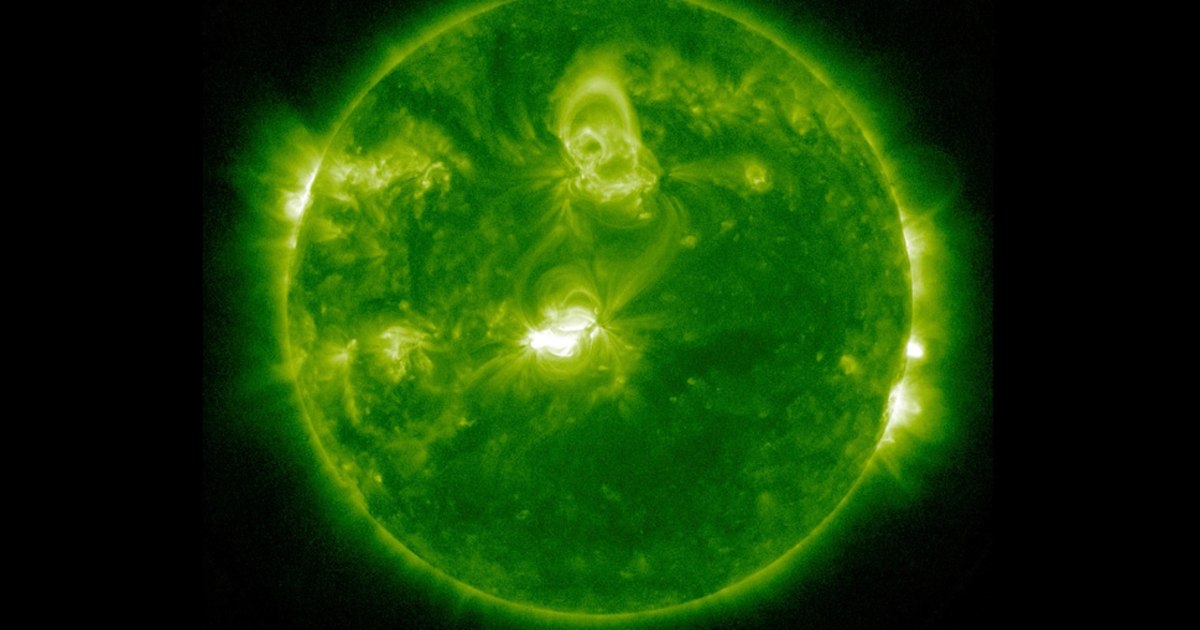Enlarge image
Reconstructed Viking Age building next to L'Anse aux Meadows site.
Photo: Glenn Nagel Photography / dpa
Columbus was not the first European to reach the American continent - that much has been known for some time. Last but not least, the Sagas, Old Norse stories from the Middle Ages, describe in detail how the Vikings had sailed across the Atlantic with their longships hundreds of years earlier. But these stories, initially passed down orally, have long been dismissed as myths and fairy tales - also because they contain many contradicting and fantastic elements.
But then a Norwegian archaeologist couple discovered the L'Anse aux Meadows site in the 1960s.
The location on the northern tip of the Canadian island of Newfoundland made the sagas historical sources.
However, the exact age of the settlement has not yet been determined, nor has the exact time of the arrival of the Vikings on the continent.
But now a study in the journal "Nature" provides better data - thanks in part to an astronomical event.
According to this, the Vikings could have lived in North America exactly a thousand years ago, in 1021.
This emerges from the analysis of three inconspicuous pieces of wood from L'Anse aux Meadows.
The finds are the oldest accurately dated evidence that humans came to America from Europe.
The woods, which come from different trees, were examined more closely by a team led by geochronologists Michael Dee and Margot Kuitems from the University of Groningen. The scientists are certain that the artifacts can be assigned to the northern European seafarers - not only because of their location, but also because they clearly showed signs of processing from blades made of metal, a material that was not made by the local population at the time.
In clarifying the question of when the wood of the artifacts was obtained, the scientists now helped radiocarbon dating, which were carried out both at the University of Groningen and at the Curt Engelhorn Center in Mannheim, as well as a cosmic event: in the year 992 AD a massive solar storm occurred, which produced a clear radio carbon signal in the tree rings in the following years.
Solar storms are unusually violent eruptions of radiation and charged particles from our home star, which can also reach the earth and leave molecular traces there.
New marker for the arrival of the Europeans
"The clear increase in radiocarbon production between 992 and 993 AD was noted in tree ring archives around the world," explains research director Dee in a press release. That signal was shown in each of the three wooden objects examined 29 growth rings in front of the bark edge. "The fact that we found the signal of the solar storm 29 growth rings in front of the bark allows us to conclude that the cutting activity took place in AD 1021," summarizes lead author Kuitems.
Their analysis thus sets a new marker for the arrival of Europeans on the American continent, according to the authors. In addition, she emphasizes the potential value of cosmic radiation events - such as the strong solar storm here - as reference points for future dating of artifacts and environmental events.
It remains unclear how many expeditions the Vikings undertook to America and how long they stayed there. Neither is so far known about the effects of their stays. The Icelandic Vinland sagas around Leif Eriksson suggested that the Vikings entered into a cultural exchange with the indigenous peoples of North America, the scientists write: “If these encounters actually took place, they could have had unintended consequences, such as the transmission of Pathogens, the introduction of foreign animal and plant species or even the exchange of human genetic information. "
However, recent data from the North Greenland population showed no evidence of the latter.
The authors conclude: “How the year 1021 AD relates to the transatlantic activities of the Vikings as a whole is the subject of future research.
Nonetheless, our results provide a chronological anchor for further investigation into the consequences of their westernmost expansion. "
joe / dpa













